Ray Henderson was an American songwriter.

Lew Brown was a lyricist for popular songs in the United States. During World War I and the Roaring Twenties, he wrote lyrics for several of the top Tin Pan Alley composers, especially Albert Von Tilzer. Brown was one third of a successful songwriting and music publishing team with Buddy DeSylva and Ray Henderson from 1925 until 1931. Brown also wrote or co-wrote many Broadway shows and Hollywood films. Among his most-popular songs are "Button Up Your Overcoat", "Don't Sit Under the Apple Tree", "Life Is Just a Bowl of Cherries", "That Old Feeling", and "The Birth of the Blues".

"Beautiful Dreamer" is a parlor song by American songwriter Stephen Foster. It was published posthumously in March 1864, by Wm. A. Pond & Co. of New York. The first edition states on its title page that it is "the last song ever written by Stephen C. Foster, composed but a few days prior to his death." However, Carol Kimball, the author of Song, points out that the first edition's copyright is dated 1862, which suggests, she writes, that the song was composed and readied for publication two years before Foster's death. There are at least 20 songs, she observes, that claim to be Foster's last, and it is unknown which is indeed his last. The song is set in 9
8 time with a broken chord accompaniment.

James Francis McHugh was an American composer. One of the most prolific songwriters from the 1920s to the 1950s, he is credited with over 500 songs. His songs were recorded by many artists, including Chet Baker, June Christy, Bing Crosby, Deanna Durbin, Ella Fitzgerald, Judy Garland, Adelaide Hall, Billie Holiday, Beverly Kenney, Bill Kenny, The Everly Brothers, Peggy Lee, Carmen Miranda, Nina Simone, Frank Sinatra, and Dinah Washington.
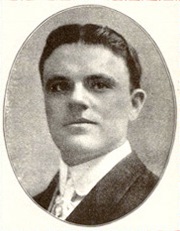
William Thomas Murray was one of the most popular singers in the United States in the early 20th century. While he received star billing in Vaudeville, he was best known for his prolific work in the recording studio, making records for almost every record label of the era. Murray was the best-selling recording artist of the first quarter of the 20th century, selling over 300 million records during the phonograph era.

King of Jazz is a 1930 American pre-Code color musical film starring Paul Whiteman and his orchestra. The film title refers to Whiteman's popular cultural appellation. At the time the film was made, "jazz", to the general public, meant jazz-influenced syncopated dance music heard on phonograph records, on radio broadcasts, and in dance halls. In the 1920s Whiteman signed and featured white jazz musicians including Joe Venuti and Eddie Lang, Bix Beiderbecke, Frank Trumbauer, and others.
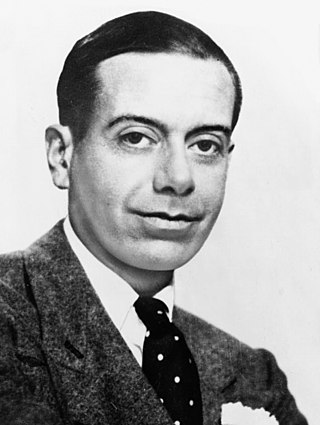
"Let's Do It, Let's Fall in Love" (also known as "Let's Do It (Let's Fall in Love)" or simply "Let's Do It") is a popular song written in 1928 by Cole Porter. It was introduced in Porter's first Broadway success, the musical Paris (1928) by French chanteuse Irène Bordoni for whom Porter had written the musical as a starring vehicle.
"Anything You Can Do (I Can Do Better)" is a show tune composed by Irving Berlin for the 1946 Broadway musical Annie Get Your Gun. The song is a duet, with one male singer and one female singer attempting to outdo each other in increasingly complex tasks.
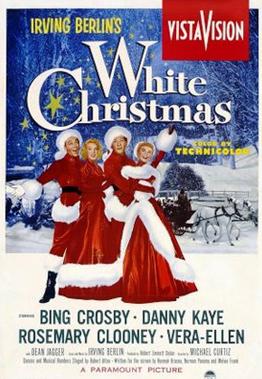
White Christmas is a 1954 American musical film directed by Michael Curtiz and starring Bing Crosby, Danny Kaye, Rosemary Clooney, and Vera-Ellen. Filmed in Technicolor, it features the songs of Irving Berlin, including a new version of the title song, "White Christmas", introduced by Crosby in the 1942 film Holiday Inn.
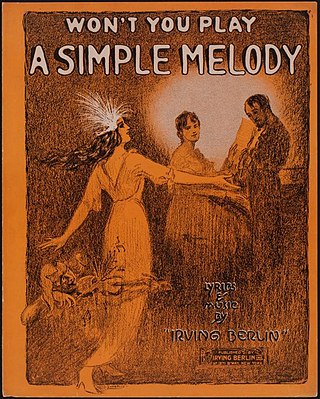
"Play a Simple Melody" is a song from the 1914 musical, Watch Your Step, with words and music by Irving Berlin. The show was the first stage musical that Berlin wrote. It ran for 175 performances at the New Amsterdam Theater in New York City. The one song from the show that is well-remembered today is "Play a Simple Melody," one of the few true examples of counterpoint in American popular music — a melody running against a second melody, each with independent lyrics. In the printed music, first the "simple melody" plays alone. Then comes the contrasting melody. Finally, the two play together. The lyrics of "Play a Simple Melody" also track the counterpoint duet in that one singer yearns for the music which mother sang, but the other singer disdains such classic fare as lacking interest and rhythm. When "Play a Simple Melody" was published, ragtime was in its heyday, led by its most consummate composer, Scott Joplin. In a famous 1916 recording of the song, while Elsie Baker wants what she considers simplicity, Billy Murray explicitly asks for "rag". The song was also recorded by Walter Van Brunt and Mary Carson in 1915.
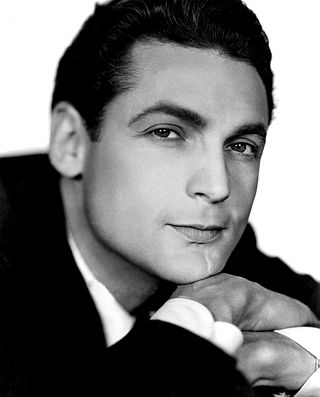
Charles David Farrell was an American film actor whose height was in the 1920s and 1930s and the Mayor of Palm Springs from 1947 to 1955. Farrell was known for his onscreen romances with actress Janet Gaynor in more than a dozen films, including 7th Heaven, Street Angel, and Lucky Star. Later in life, he starred on TV in the 1950s sitcoms My Little Margie and played himself in The Charles Farrell Show. He was also among the early developers of Palm Springs.
"Button Up Your Overcoat" is a popular song. The music was written by Ray Henderson, the lyrics by B.G. DeSylva and Lew Brown. The song was published in 1928, and was first performed later that same year by vocalist Ruth Etting. However, the most famous rendition of this song was recorded early the following year by singer Helen Kane, who was at the peak of her popularity at the time. Kane's childlike voice and Bronx dialect eventually became the inspiration for the voice of cartoon character Betty Boop.

Elmer Goodfellow "El" Brendel was an American vaudeville comedian turned movie star, best remembered for his dialect routine as a Swedish immigrant. His biggest role was as "Single-0" in the sci-fi musical Just Imagine (1930), produced by Fox Film Corporation. His screen name was pronounced "El Bren-DEL".

Bing: A Musical Autobiography was Bing Crosby's fourth Decca vinyl LP, recorded and released in 1954.

"The Gold Diggers' Song " is a song from the 1933 Warner Bros. film Gold Diggers of 1933, sung in the opening sequence by Ginger Rogers and chorus. The entire song is never performed in the 1933 movie, though it introduces the film in the opening scene. Later in the movie, the tune is heard off stage in rehearsal as the director continues a discussion on camera about other matters.

Kenneth Lorin Darby was an American composer, vocal arranger, lyricist, and conductor. His film scores were recognized by the awarding of three Academy Awards and one Grammy Award. He provided vocals for the Munchkinland mayor in The Wizard of Oz (1939), who was portrayed in the film by Charlie Becker. Darby is also notable as the author of The Brownstone House of Nero Wolfe (1983), a biography of the home of Rex Stout's fictional detective.

Anything Goes is a 1956 American musical film directed by Robert Lewis, and starring Bing Crosby, Donald O'Connor, Zizi Jeanmaire, and Mitzi Gaynor. Adapted from the 1934 stage musical Anything Goes by Cole Porter, Guy Bolton, and P. G. Wodehouse, the film is about two entertainers scheduled to appear in a Broadway show who travel to Europe, where each discovers the perfect leading lady for the female role. Bing Crosby's character, Bill Benson, goes to England and meets Mitzi Gaynor's character Patsy Blair, and he signs her as the female lead. Meanwhile, Donald O'Connor's character, Ted Adams, travels to France and meets Jeanmaire's character, Gaby Duval, and he signs her to the same role. On the return voyage, with each man having brought his leading lady along, the Atlantic becomes a stormy crossing when each man must tell his discovery that she might not get the role.
Sunnyside-Up was a black and white weekly variety program produced at HSV-7 Melbourne, during the late 1950s until the mid 1960s. Surviving Kinescope episodes sometimes presented the title in three words as “Sunny Side Up“ and with a 3-letter acronym.
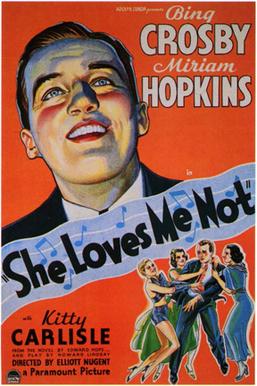
She Loves Me Not is a 1934 American comedy film directed by Elliott Nugent and starring Bing Crosby and Miriam Hopkins. Based on the novel She Loves Me Not by Edward Hope and the subsequent play by Howard Lindsay, the film is about a cabaret dancer who witnesses a murder and is forced to hide from gangsters by disguising herself as a male Princeton student. Distributed by Paramount Pictures, the film has been remade twice as True to the Army (1942) and as How to Be Very, Very Popular in (1955), the latter starring Betty Grable. The film is notable for containing one of the first major performances of Bing Crosby, and it helped launch him to future stardom. This was also the last film that Miriam Hopkins made under her contract to Paramount Pictures, which began in the early 1930s upon her arrival in Hollywood. In 1935, the film received an Academy Award nomination for Best Original Song for "Love in Bloom", theme song of comedian Jack Benny.

Anything Goes is a soundtrack album issued by Decca Records from the film of the same name. The film starred Bing Crosby, Donald O'Connor, Jeanmaire, and Mitzi Gaynor. Joseph J. Lilley was the musical director with special orchestral arrangements by Van Cleave. All the songs were written by Cole Porter with the exception of three additional songs from Jimmy Van Heusen (music) and Sammy Cahn (lyrics) which have been annotated in the listing below. The soundtrack recording took place between April and June 1955. Three songs were recorded in February 1956 with Joseph J. Lilley and his Orchestra for inclusion in the album to replace the original soundtrack versions.

















